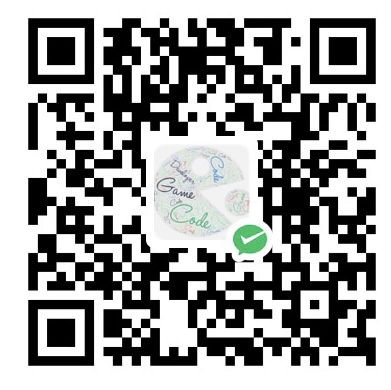View
记录
storyboard 分模块使用,尽量一个模块一个 storyboard, 不要整个工程混杂在一个里面。不仅可以尽量减少冲突,也有助于清晰整个工程的结构。
勾选 Is Initial View Controller 确定 storyboard 的主 VC 入口,主入口的左侧会有一个箭头
三大容器(container view controller,Tab Bar Controller,Navigation Controller,Split View Controller)。
容器与其他 VC 关联: relationship segue。
TableViewController 中 Dynamic Propotype 与 Static Cells 混用:
在 Storyboard 中,设置类型为 Static Cells ,在需要使用 Dynamic Propotype 的 section 中,留一个 cell ,并设置好 Identifier 。
代码中需要实现 UITableView 的代理方法。
以下方法必须实现。swift tableView(tableView: UITableView, cellForRowAtIndexPath indexPath: NSIndexPath) -> UITableViewCell tableView(tableView: UITableView, numberOfRowsInSection section: Int) -> Int tableView(tableView: UITableView, heightForRowAtIndexPath indexPath: NSIndexPath) -> CGFloat // *** *** tableView(tableView: UITableView, indentationLevelForRowAtIndexPath indexPath: NSIndexPath) -> IntStatic Cell,不重用 cell,比如个人信息页面。可以直接在 storyboard 里设置,更方便。
Dynamic Prototypes,可重用 cell。需要确定 cell 的 identifier,并在在代码中设置代理。
Selection Segue 的意思是当用户点击 table view cell 的任何部分,都会产生反应。
Accessory Action 的意思是只有当用户点击 table view cell 右边的圆圈箭头按钮时,才会产生的反应。apple 建议使用 segue 来进行跳转,项较于 push 等操作,支持形式更多,并且在不同设备(iPad 和 iPhone),会有更好的体验。
Segue 的类型- Show
使用方法 showViewController: sender:
该方法为 VC 提供了自适应、灵活的呈现方式;
用在 UINavigationController 堆栈视图时,presentedViewController 进入时由右向左,退出时由左向右。新压入的 VC 有返回按钮,单击可以返回;
用在 UIViewController 实例时,和 presentViewController: animated: completion: 效果一致。 - Show Detail
使用方法 showDetailViewController: sender:;
只适用于嵌入在 UISplitViewController 对象内的 VC,分割控制器用以替换详细控制器(DetailViewController);
不提供返回按钮;
用于 UISplitViewController 以外的控制器时,和 showViewController:sender 用法一样。 - Present Modally
使用方法 presentViewController: animated: completion:;
有多种不同呈现方式,可根据需要设置。在 iPhone 中,一般以动画的形式自下向上覆盖整个屏幕,用户无法与上一个 VC 交互,除非关闭当前 VC;在 iPad 中,常见呈现为一个中心框,中心框以动画形式自下向上弹出,同时使底层 VC 变暗;
不提供返回按钮。 - Present as Popover
在 iPad 中,目标 VC 以浮动窗样式呈现,点击目标 VC 以外区域,目标 VC 消失;在 iPhone 中,默认目标 VC 以模态覆盖整个屏幕。
- Exit Segue
在需要返回到的界面实现方法 @IBAction func xxxx(segue: UIStoryboardSegue),方法名字任意,参数类型必须为 UIStoryboardSegue,一定要加上 @IBAction 关键字。
右键返回界面上方的 Exit,弹出菜单中可以看到刚才在返回到的界面中加的那个方法的名称;
连线,选择实现动作的控件,或者连接到当前界面选择手动代码实现返回(需要指定 identifier);
使用 exit segue 的好处是可以跳转到任意打开过的界面比如从 3->1,而不是只能返回上级界面从 2->1。 - Embed Segue
Container View,将容器 MVC 的 View 放入到另一个 MVC 中。
- Show
获取 storyboard 的实例:UIStoryboard(name: <#T##String#>, bundle: <#T##Bundle?#>)。
获取 storyboard 中 VC 的实例,通过 VC 的 Storyboard ID:
1
UIStoryboard(name: "Main", bundle: nil).instantiateViewController(withIdentifier: "");
通过 storyboard reference,可以拆分成多个 storyboard,方便开发。
选中需要拆分的 VC,菜单栏干中 Editor->Refactor to Storyboard。加载其他 storyboard 的指定 VC:
拖入控件 Storyboard Reference;
填写 storyboard 的名字;
填写 Reference ID,即目标 storyboard 中目标 VC 的 Storyboard ID。UIStackView,快速进行水平或者垂直布局。
如何对两个已经和边界拉好约束的相邻控件进行约束:
先设置约束距离为 0,然后设置约束 greater than or equal。关键字 IBDesignable,可以将 code 实现的 view 显示到 storyboard 上。
如果有 image,需要使用下面的方法,才能正确显示
swift UIImage(named: "xxx", in: Bundle(for: self.classForCoder), compatibleWith: traitCollection);关键字 IBInspectable,可以将代码写好的 property 显示到 storyboard 右边的 inspect 上。
setNeedsDisplay(),当需要重新绘制的时候,需要主动调用这个方法,不要调用 UIView 的 draw() 方法。
setNeedsLayout(),当需要 subView 重新布局的时候,调用这个方法。
如果 UIView 需要重新绘制,content mode 需要设置为 Redraw 。
当 UITraitCollection 改变时,系统会调用此方法,用来更新 UI。在方法里实现 setNeedsDisplay() 和 setNeedsLayout()。
1
2//To be overridden as needed to provide custom behavior when the environment's traits change.
-(void)traitCollectionDidChange:(nullable UITraitCollection *)previousTraitCollection;e.g. UIImage(named: “name”, in: Bundle(for: self.classForCoder), compatibleWith: traitCollection),并使用 draw 绘制图片,此时屏幕翻转,需要重新绘制,系统会调用上面方法。
子视图的布局写在此方法中,当视图需要重新绘制布局时,调用 setNeedsLayout(),会自动调用此方法。
1
2
3//override point. called by layoutIfNeeded automatically.
// As of iOS 6.0, when constraints-based layout is used the base implementation applies the constraints-based layout, otherwise it does nothing.
-(void)layoutSubviews;自定义绘制实现的方法,当视图需要重新绘制(Redraw)的时候调用 setNeedsDisplay(),会自动调用此方法。
1
-(void)drawRect:(CGRect)rect;
Core Graphics 属于更底层
UIKit 依赖于 Core Graphics 框架
UIBezierPath 属于 UIKit,是对 Core Graphics 框架中的 CGPath 的封装
补充:UIGraphicsGetCurrentContext()画出的线,被使用了就被消耗掉。三种动画方式:
- UIViewPropertyAnimator(iOS 10.0)
iOS 10.0,apple 封装好的动画 API,更精细的控制动画,可以通过 startAnimation、 pauseAnimation 和 stopAnimation 控制动画。
- Transitions
- Dynamic Animator
给对象添加各种物理属性(重力、加速度等)
- UIViewPropertyAnimator(iOS 10.0)
Auto Layout
- 通过 Interface Builder 来实现是好的选择;
- 通过代码实现 Auto Layout;
在 -init 或者 -viewDidLoad 方法中,实现固定不变的约束
在 -updateConstraints 中,实现程序运行时可能改变的约束
当需要改变约束的时候,按顺序调用下面方法1
2setNeedsUpdateConstraints()
updateConstraintsIfNeeded() - view 的子类布局同理
